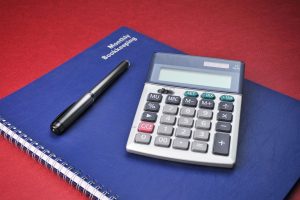
Janet Berry-Johnson, CPA, is a freelance writer with over a decade of experience working on both the tax and audit sides of an accounting firm. She’s passionate about helping people make sense of complicated tax and accounting topics. Her work has appeared in Business Insider, Forbes, and The New York Times, and on LendingTree, Credit Karma, and Discover, among others. Sign up to a free course to learn the fundamental concepts of accounting and financial management so that you feel more confident in running your business.
- Since it reports revenue and expenses in real-time, it can help you stay on top of your spending.
- So, liabilities can be further divided into current liabilities and non-current liabilities.
- By recording each transaction correctly, your trial balance should show equal credits and debits.
- A general journal records every business transaction in chronological order—it is the first point of entry into the company’s accounts.
- And if you decide to hire an accountant or bookkeeper, those ledgers can get them up to speed much faster than if they were starting with nothing.
- A ledger is a book or digital record containing bookkeeping entries.
- Thus, operating income helps you to know your capacity to generate profits from your primary business activity.
You record the financial transactions under separate account heads in your company’s General Ledger. In other words, you record transactions under the individual General Ledger accounts to which such transactions relate. Further, these transactions are recorded based on the Duality Principle of Accounting. Say you own a publishing ledger gurus house Martin & Co. and purchased 20 kg paper on cash at $20 per kg on December 1, 2020. Therefore, the following is the journal and ledger that you need to record into books for such a transaction. One important difference between a journal and a ledger is that the ledger is where double-entry bookkeeping takes place.
How to Record a Cost of Goods Sold Journal Entry
Use the general ledger report in QuickBooks to see a complete list of transactions from all accounts within a date range. For example, if a company makes a sale, its revenue and cash increase by an equal amount. When a company borrows funds, the cash balance increases, and the debt (liability) balance increases by the same amount. We believe that finances are the heartbeat of every ecommerce business and should be a major driving point behind the decisions they make.
So, General Ledger contains information related to different accounts. These accounts provide information that helps you in preparing your business’ financial statements. These financial statements include the income statement and balance sheet. In the double-entry system, each financial transaction affects at least 2 different ledger accounts. Each entry is recorded in two columns, with debit postings on the left and credit entries on the right of the ledger.
Control Accounts
Operating Expenses are the expenses that you must mandatorily incur to run the day-to-day operations of your business. Thus, these are the expenses without which you would not be able to carry out your core business operations. Examples of Operating Expenses include rent, payroll, insurance, etc. Also, liabilities can be represented on the right-hand side of the balance sheet.
- Bookkeepers primarily record transactions in a journal, also known as the original book of entry.
- These sources help you to verify that the amounts recorded in the Ledger accounts are accurate.
- A sales ledger is a detailed list in chronological order of all sales made.
- Thus, these details come in handy as you do not have to look for invoices or bank statements at the time of filing tax returns.
- General Ledger Accounts help you to record details of transactions that your business undertakes over an accounting period.
- Furthermore, the assets are categorized into current assets and fixed assets.
It is prepared after you pass journal entries in the Books of Original Entry (Journal). Further, the purchase ledger helps you to know the amount you pay to the creditors as well as the outstanding amount. Besides this, you can refer back to the purchase https://www.bookstime.com/ details in case you need to so in the future. Thus, a purchase ledger helps you to keep a track of the purchases your business entity makes. This way you can make sure that you have enough purchases for the smooth manufacturing of the products.
What is the difference between a general ledger and a balance sheet?
In this step, you need to compare the previous accounting periods closing trial balances to the opening balances of the current period ledger accounts. Thus, you need to check the balances for balance sheet accounts like assets, liabilities, and stockholder’s equity. A general ledger uses the double-entry accounting method for generating financial statements. This method records the debits and credits for each transaction, which should always balance out.
Fasteners secure profits for the savvy LBM dealer – LBM Journal
Fasteners secure profits for the savvy LBM dealer.
Posted: Thu, 19 Oct 2023 07:00:00 GMT [source]
Each journal entry must have at least one debit and one credit entry. Preparing a ledger is important as it serves as a master document for all your financial transactions. Since it reports revenue and expenses in real-time, it can help you stay on top of your spending. The general ledger also helps you compile a trial balance, spot unusual transactions, and create financial statements. An accounting ledger, also commonly called a general ledger, is the main record of your business’s financial standing.
Now, the best practice of recording a correct entry is to reverse the original entry and then record a new entry with the correct amount. This is done by comparing balances appearing on the Ledger Accounts to the original documents like bank statements, invoices, credit card statements, purchase receipts, etc. Furthermore, a General Ledger helps you to know the overall profitability and financial health of your business entity.
